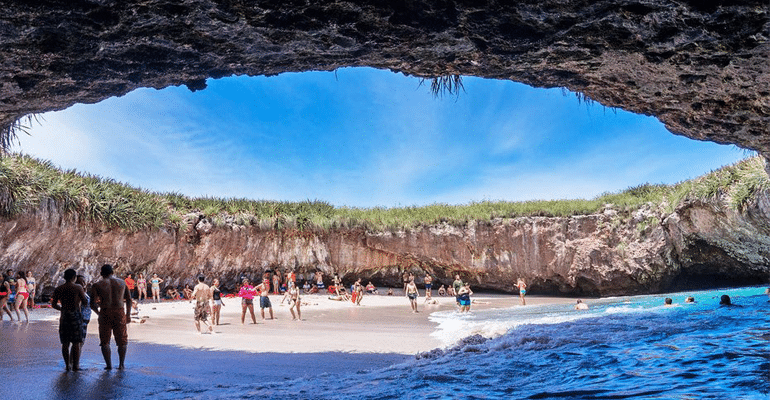No matter how you feel about a wall on the Mexican border, many people have been left wondering how such a structure would affect travel between the U.S. and Mexico. In past years the close relationship between the two countries facilitated tourism, which is a major economic driver for both Mexico and the United States.
Wall or no wall, travel, and tourism between the U.S. and Mexico will continue. Some analysts are predicting there may be an increase in travel to Mexico before construction begins in anticipation that travel may become more difficult.

If anything, there are signs that the recent travel bans and talk of a wall could hurt U.S. tourism more than it will affect Mexico since Mexicans account for over 18 million visits a year to the U.S. That number was up from the 13.47 visits in 2010, but now the tourism numbers are expected to drop significantly.
Below are just a few of the top reasons travel to Mexico from the U.S. will continue.
Many Mexican Resorts Are U.S. Owned
The first point for people to keep in mind is that many of the resorts and hotels in Mexico’s top travel destinations have a connection to the U.S. Travelers that want to stay at a high-end hotel in Cancun or a Cabo San Lucas luxury resort will likely be working with a U.S.-based company rather than a purely Mexican establishment. This helps to minimize potential travel issues for Americans and makes it easy to arrange for accommodations.
These American-owned resorts can also arrange guided tours and excursions for visitors. Tourists that prefer not to venture too far can find plenty of activities at their resort to stay busy. Long story short, these resorts make traveling to Mexico easy and safe for Americans despite what’s going on in Washington, D.C.
Mexico Is Home to Unique Attractions
If there’s a specific point of interest a traveler wants to see they’ll find a way to get there regardless of a wall. Mexico is home to a number of manmade and natural wonders that can’t be found anywhere else in the world. For example, Mexico is the only place you can visit Joyxee Island, an artificial floating island constructed with recycled plastic bottles.
Other popular tourist attractions in Mexico include:
- The Mayan Riviera
- Copper Canyon
- Los Cabos Corridor beaches
- Archaeological sites of Chichén Itzá
- Fortress of Tulum
- Mexico City Metropolitan Cathedral
- Pyramids of Teotihuacan
This is just a small sampling of unique sites across Mexico that attract millions of tourists every year. Because they are one-of-a-kind locations that can’t be found elsewhere, Mexico will continue to be a top travel destination.
Mexican Resort Towns Are As Busy As Ever
If travelers need a clear indicator of what to expect in the coming years they need only look at the top resort towns in Mexico. Groups like the Organization for Economic Co-operation and Development (OECD) have noted that Mexico is one of the top 10 travel destinations in the world. This is a title that Mexico has reclaimed in recent years, which points to the increase in tourism.
Much of the tourism in Mexico is centralized in the major coastal destinations with high-end resorts and amenities. Half of all hotel rooms are in just eight Mexican cities, and those cities aren’t seeing a decrease in visitors. Currently, the Mexican government is working to create an improved infrastructure to expand tourism and better handle the growing number of visitors.
Flights Won’t Be Affected
Millions of people enter Mexico by the vehicle at one of the border checkpoints, but that isn’t the only way of getting there. Flights between the U.S. and Mexico won’t be impacted by a wall and will continue as normal. If anything, there’s likely to be an increase in air travel between Mexico and the U.S. if traveling by vehicle is more cumbersome.
Another thing aiding flights between Mexico and U.S. is the bilateral Air Transport Agreement. The agreement increased the number of flights taking place between the two countries. There are also pilot programs that have increased information sharing between Mexico and the U.S. in an effort to track who is crossing the border and improve safety.

